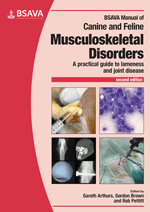
Full text loading...

Orthopaedic surgery is undertaken to achieve specific surgical goals that improve function and relieve musculoskeletal discomfort. However, complications can occur which have the potential to significantly affect both short term and long-term outcomes. This chapter provides information on defining complications, prevention and minimization of complications, signs of complications and types of complications.
Complications of orthopaedic surgery, Page 1 of 1
< Previous page | Next page > /docserver/preview/fulltext/10.22233/9781910443286/9781910443286.16-1.gif

Full text loading...














